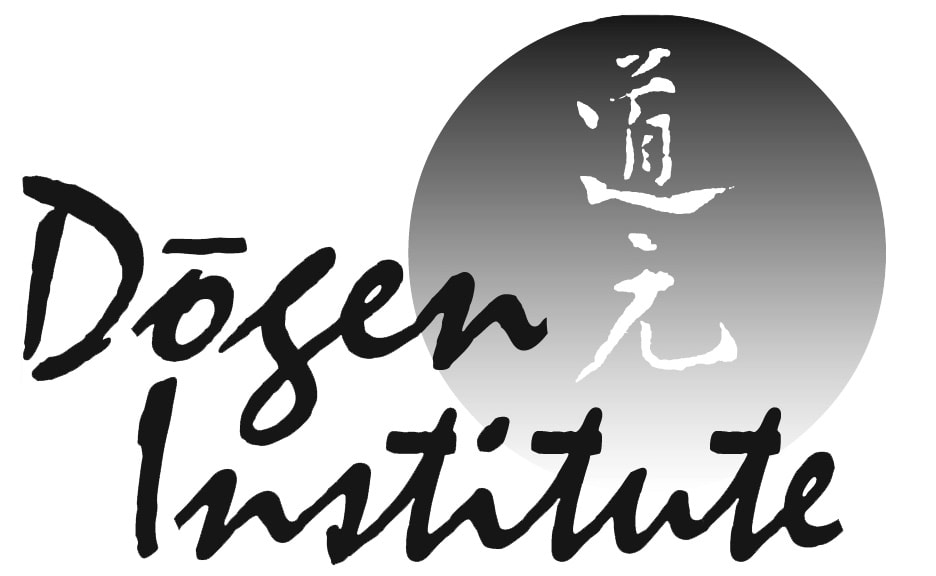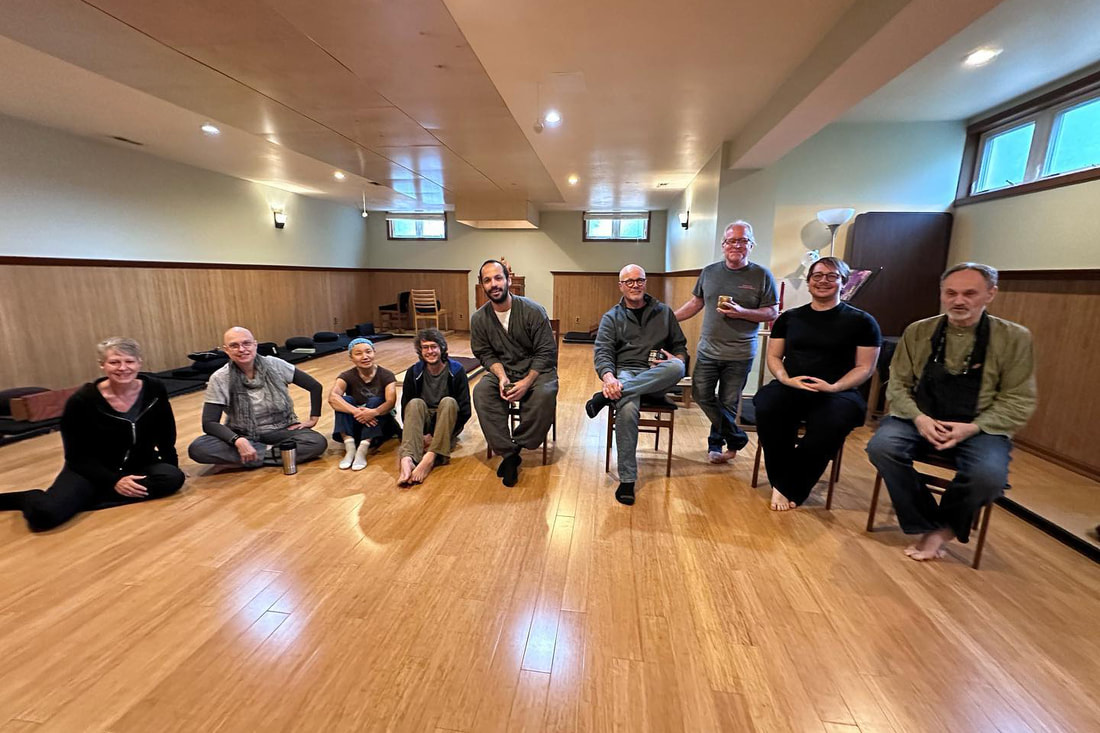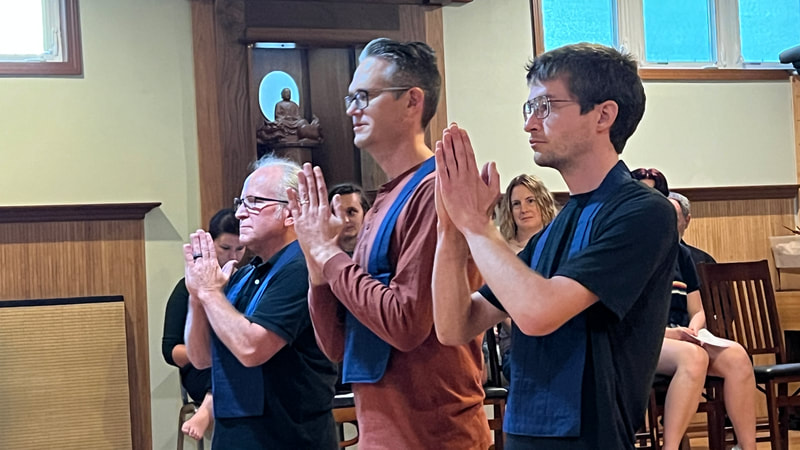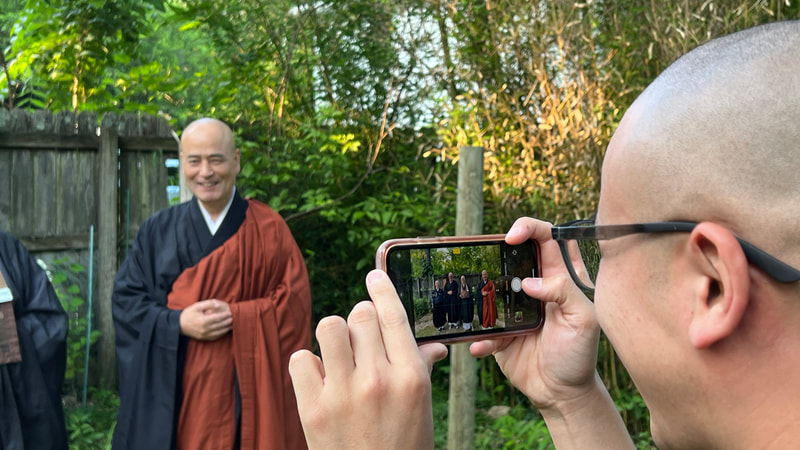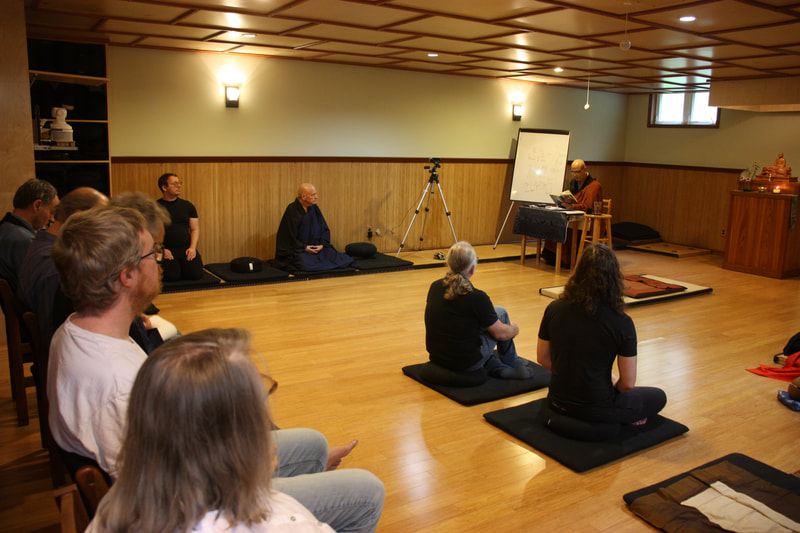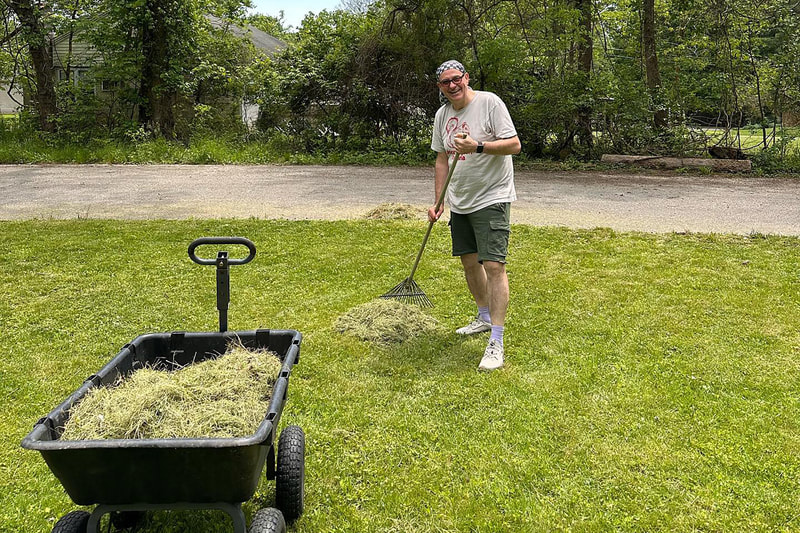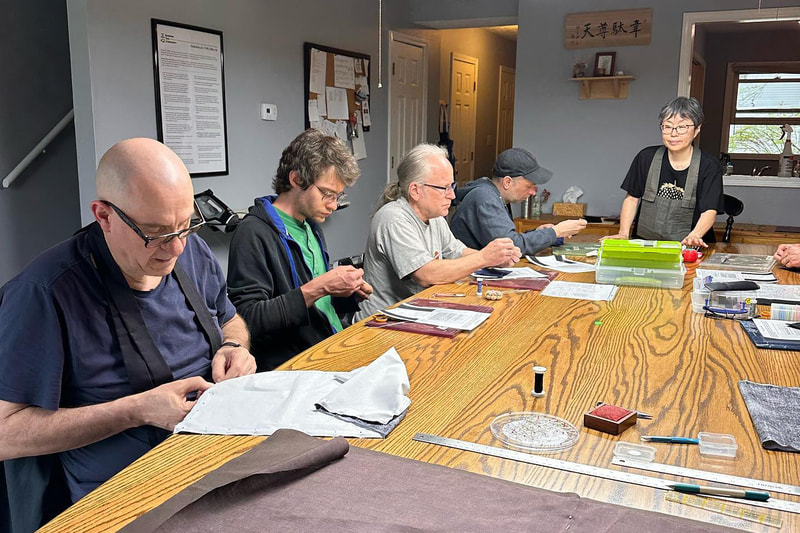Sanshin Style: Six points of practice
|
Sanshin Zen Community enables the investigation of interconnectedness as it manifests in community by engaging in six points of practice within the Soto Zen tradition:
• Zazen in a Buddhist context • Keeping forms simple • Balancing peace and progress • Dharma study as a support for zazen • Work practice as an investigation of community • Deeply inquiring into the teaching of ehou ichinyo: kesa and dharma are one |
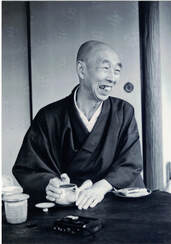
We inherit the first three of our six points from Kosho Uchiyama's approach to zazen, which is characterized by three elements:
The study of the meaning of zazen in the context of Buddha's teachings, understanding the common thread that runs from the teachings of Shakyamuni through the Mahayana tradition, the teachings of Dogen Zenji, Sawaki and Uchiyama Roshis, down to Okumura Roshi and the practice of shikantaza at Sanshin today.
Keeping forms and ceremonies simple in order to understand what we're doing and why, and to maintain their connection with zazen. Rather than being merely performances, forms should come from the mind of shikantaza as an expression of respect and gratitude.
Understanding the significance of zazen and study in modern daily life so that we can maintain a balance between progress and peace of mind. We live with a tension between chasing after or escaping from things and avoiding taking any action at all in order to remain calm. Shikantaza teaches us how to take the necessary wise and compassionate action without fanning the flames of our delusion.
The study of the meaning of zazen in the context of Buddha's teachings, understanding the common thread that runs from the teachings of Shakyamuni through the Mahayana tradition, the teachings of Dogen Zenji, Sawaki and Uchiyama Roshis, down to Okumura Roshi and the practice of shikantaza at Sanshin today.
Keeping forms and ceremonies simple in order to understand what we're doing and why, and to maintain their connection with zazen. Rather than being merely performances, forms should come from the mind of shikantaza as an expression of respect and gratitude.
Understanding the significance of zazen and study in modern daily life so that we can maintain a balance between progress and peace of mind. We live with a tension between chasing after or escaping from things and avoiding taking any action at all in order to remain calm. Shikantaza teaches us how to take the necessary wise and compassionate action without fanning the flames of our delusion.
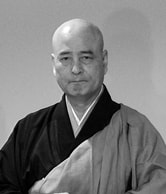
The next two points arise from founder Shohaku Okumura's practice vision for the way we carry out the three activities of Zen practice: zazen, work and study.
Because of our intensive focus on sitting, we engage in dharma study as a support for zazen. "When I began genzo-e, I thought it was dangerous to sit as much as we do at Sanshinji without understanding the deep meaning of zazen practice taught by Dogen Zenji. For me, zazen is the main thing; studying Dogen Zenji's teachings supports intensive zazen practice. Intellectual understanding only without sitting is not so meaningful."
Work practice is an investigation of community rather than simply being volunteer work at the temple or in the world. This is where we actively practice with the precepts, come to understand beneficial action, and directly experience the sangha as the virtue of peace and harmony. We are beginning particularly to focus on our relationship with the land and the food we eat.
Because of our intensive focus on sitting, we engage in dharma study as a support for zazen. "When I began genzo-e, I thought it was dangerous to sit as much as we do at Sanshinji without understanding the deep meaning of zazen practice taught by Dogen Zenji. For me, zazen is the main thing; studying Dogen Zenji's teachings supports intensive zazen practice. Intellectual understanding only without sitting is not so meaningful."
Work practice is an investigation of community rather than simply being volunteer work at the temple or in the world. This is where we actively practice with the precepts, come to understand beneficial action, and directly experience the sangha as the virtue of peace and harmony. We are beginning particularly to focus on our relationship with the land and the food we eat.
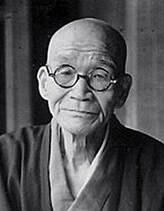
Finally, we recognize the importance of Sawaki Roshi's leadership in the 20th century nyoho-e movement, and deeply inquire into the teaching of ehou ichinyo, kesa and dharma are one. We aspire to be responsible for collecting and offering the most complete and accurate set of resources possible related specifically to our dharma great-grandfather’s nyoho-e teachings and practices.
Learn more about each of our six points by clicking on the images below.
Learn more about each of our six points by clicking on the images below.

